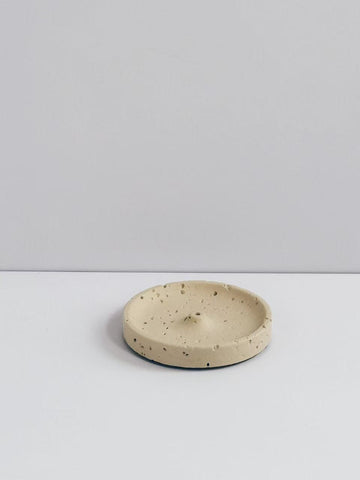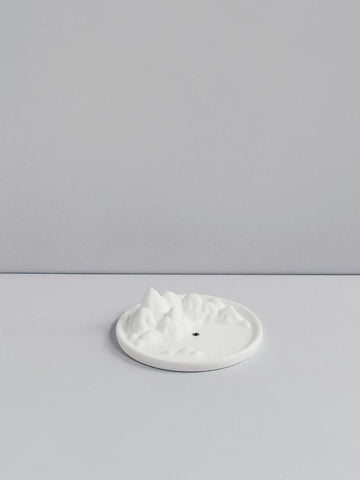Frankincense and myrrh—two ancient resins steeped in history and cultural significance—have transcended time, geography, and even religion. From their sacred roles in Egyptian rituals to their powerful medicinal applications in traditional Chinese medicine, these botanical substances have remained relevant for millennia.
In this article, we’ll explore what frankincense and myrrh are, where they come from, their traditional and modern uses, and how they remain central to natural wellness and aromatherapy practices today. We’ll also introduce you to a product that elegantly captures their legacy in a modern form: Dream of the Dynasty Incense Sticks, crafted by Memoricall, a brand rooted in natural heritage and refined woody scents.
What is Frankincense?
Frankincense is an aromatic resin obtained from trees of the genus Boswellia, particularly Boswellia sacra, Boswellia frereana, and Boswellia carteri. These trees are primarily found in the dry regions along the Red Sea, especially in Somalia, Ethiopia, and parts of the Arabian Peninsula.
In traditional Chinese medicine, frankincense is referred to as 乳香 (rǔ xiāng), first recorded in the classic medical text “Mingyi Bielu”. The resin exudes from the bark when it’s deliberately incised, hardens over time, and is then harvested and processed into either a fragrant incense or medicinal powder.
Key Characteristics of Frankincense:
-
Latin Name: Boswellia spp.
-
Chinese Name: 乳香 (rǔ xiāng)
-
Properties: Pungent aroma, slightly sweet, warm
-
Harvest Season: March to September
-
Active Components: Volatile oils, boswellic acids
Medicinal Properties:
Frankincense is widely recognized for its ability to:
-
Promote blood circulation
-
Relieve pain and reduce inflammation
-
Help regenerate skin and tissues
-
Treat chest pain, rheumatic pain, trauma, and ulcers

What is Myrrh?
Often mentioned alongside frankincense, myrrh is another resin derived from the bark of Commiphora myrrha or Commiphora africana, species also native to Somalia, Ethiopia, and southern Arabia.
In Chinese medicine, it’s called 没药 (mò yào), first documented in the ancient pharmacopoeia “Yaoxing Bencao”. It exists in two forms: natural myrrh (from Commiphora myrrha) and gum myrrh (from Commiphora africana).
The word myrrh originates from the Arabic term "murr", meaning "bitter," a reference to its naturally sharp taste.
Key Characteristics of Myrrh:
-
Latin Name: Commiphora spp.
-
Chinese Name: 没药 (mò yào)
-
Properties: Bitter, neutral, aromatic
-
Harvest Method: Tree bark incision and sap collection
-
Harvest Season: Spring through late summer
Medicinal Properties:
Myrrh is prized for its effectiveness in:
-
Dissolving blood stasis
-
Relieving pain from trauma or internal disorders
-
Healing wounds, ulcers, and abscesses
-
Treating menstrual disorders, gastrointestinal pain, and rheumatism

Frankincense and Myrrh in Ancient Civilizations
The Horn of Africa, specifically Somalia, has long been known as the world's most fertile source for frankincense and myrrh. Records indicate that as early as 2000 BCE, these resins were traded across Africa, Arabia, and Asia.
In Ancient Egypt, frankincense was used in temple rituals and spiritual ceremonies, while myrrh played a key role in mummification due to its preservative properties.
According to Chinese historical texts, both resins were imported through the Maritime Silk Road, with records in Xin Tang Shu and Youyang Zazu confirming trade links between Tang dynasty China and Somalia. Later, during the Ming dynasty, the famous Chinese admiral Zheng He traveled to Mogadishu, further strengthening economic and cultural exchanges.
Traditional Chinese Medicine: Synergy of Frankincense and Myrrh
Chinese herbalists often combine frankincense and myrrh for enhanced therapeutic effects. They are categorized as “blood-activating and stasis-removing” herbs in Traditional Chinese Medicine (TCM).
According to Compendium of Materia Medica (本草纲目):
"Frankincense activates blood and relaxes muscles; myrrh disperses stasis and relieves pain. Together, they reduce swelling, generate flesh, and relieve internal and external injuries."
When Used Separately:
-
Frankincense is favored for wind-damp joint pain and musculoskeletal tension.
-
Myrrh is better suited for blood stasis-related abdominal pain and trauma.
However, both share antimicrobial, anti-inflammatory, and regenerative properties and are essential in both internal medicine and external trauma care in TCM.
The Role of Temperature and Storage
Frankincense and myrrh contain volatile oils, the primary source of their aroma and efficacy. High temperatures or improper storage can lead to oil evaporation, significantly reducing their potency. For optimal preservation:
-
Store in cool, dry places
-
Avoid direct sunlight
-
Use airtight containers
This attention to quality control is especially important when using them in incense products, where aroma integrity defines the user experience.
Modern Applications: Wellness, Aromatherapy, and Incense
Today, frankincense and myrrh are making a strong comeback—not just as relics of ancient medicine, but as holistic wellness tools.
Popular Modern Uses:
-
Essential oils for meditation and stress relief
-
Topical salves for skin healing and joint pain
-
Natural incense for spiritual and sensory enrichment
At Memoricall, our incense is a tribute to this legacy. The Dream of the Dynasty Incense Sticks are crafted using natural ingredients and are inspired by historical Chinese incense traditions. Their woody scent profile—combined with subtle notes—offers a sensory journey reminiscent of ancient temples and healing rituals.
Why Frankincense and Myrrh Still Matter
Whether you approach them from a spiritual, medicinal, or sensory perspective, frankincense and myrrh remain relevant in today’s world. Their story is one of natural healing, cross-cultural connection, and timeless value.
In a modern age flooded with synthetic fragrances and chemical-laden health products, these tree-born resins serve as a reminder that nature has always offered us remedies, rituals, and fragrances worth remembering.
Final Thoughts
If you're exploring natural incense or wish to reconnect with ancient wisdom through fragrance, consider starting with Dream of the Dynasty Incense Sticks. At Memoricall, we believe that the sense of smell is loyal to memory, and every stick of incense is our way of preserving that belief.
Keywords Targeted: what is frankincense and myrrh, frankincense benefits, myrrh traditional use, TCM frankincense, incense with frankincense, natural incense sticks








